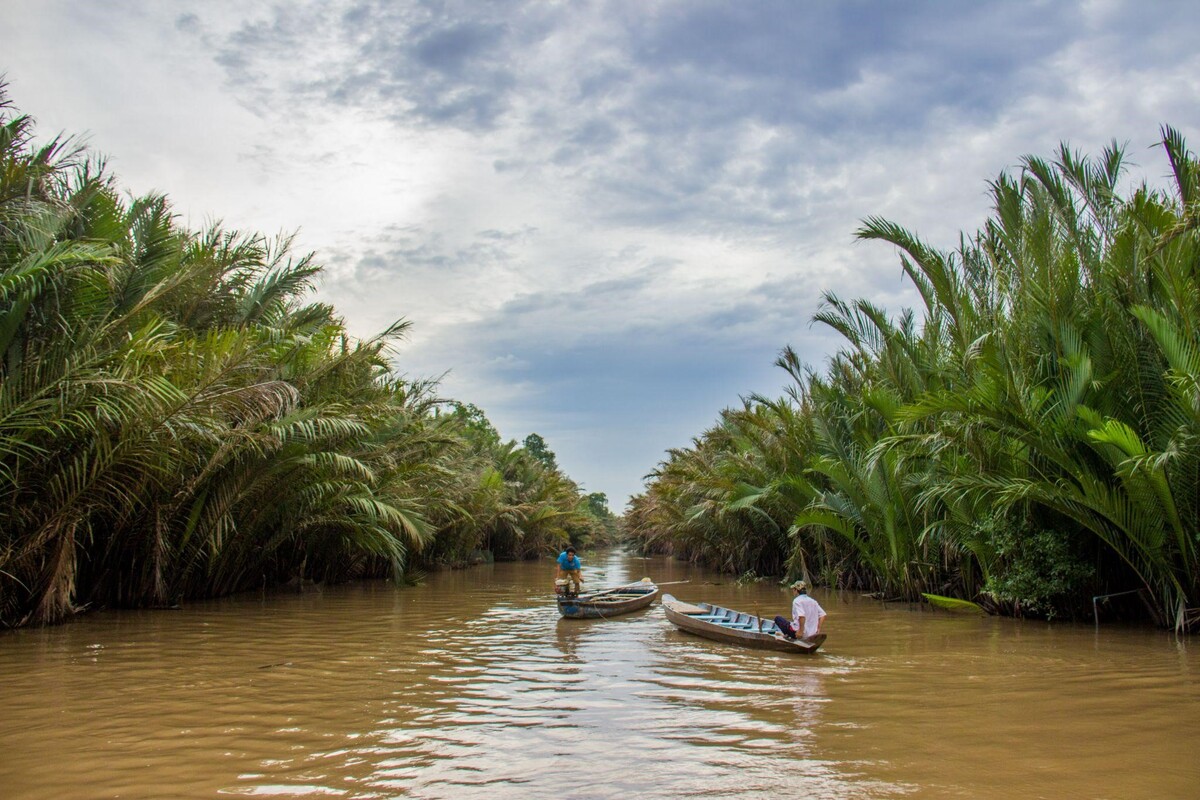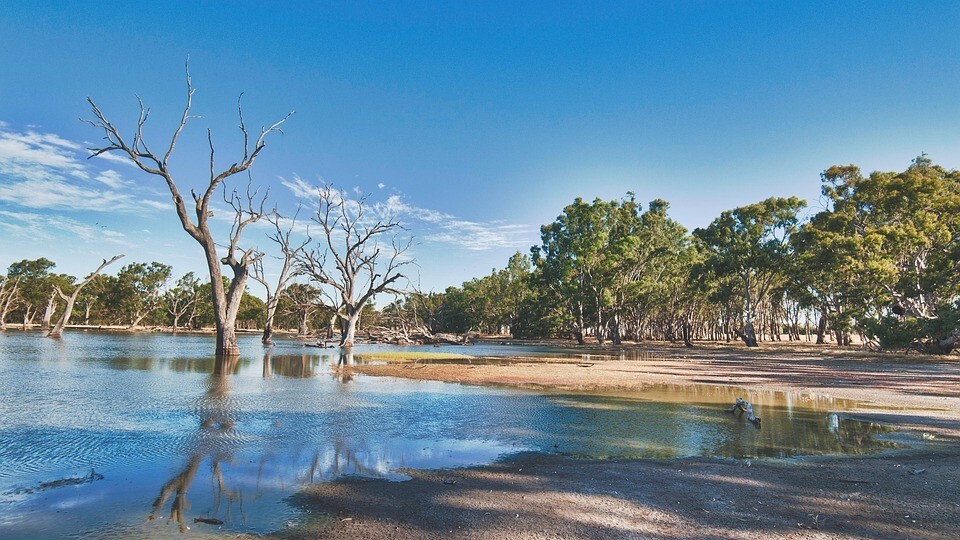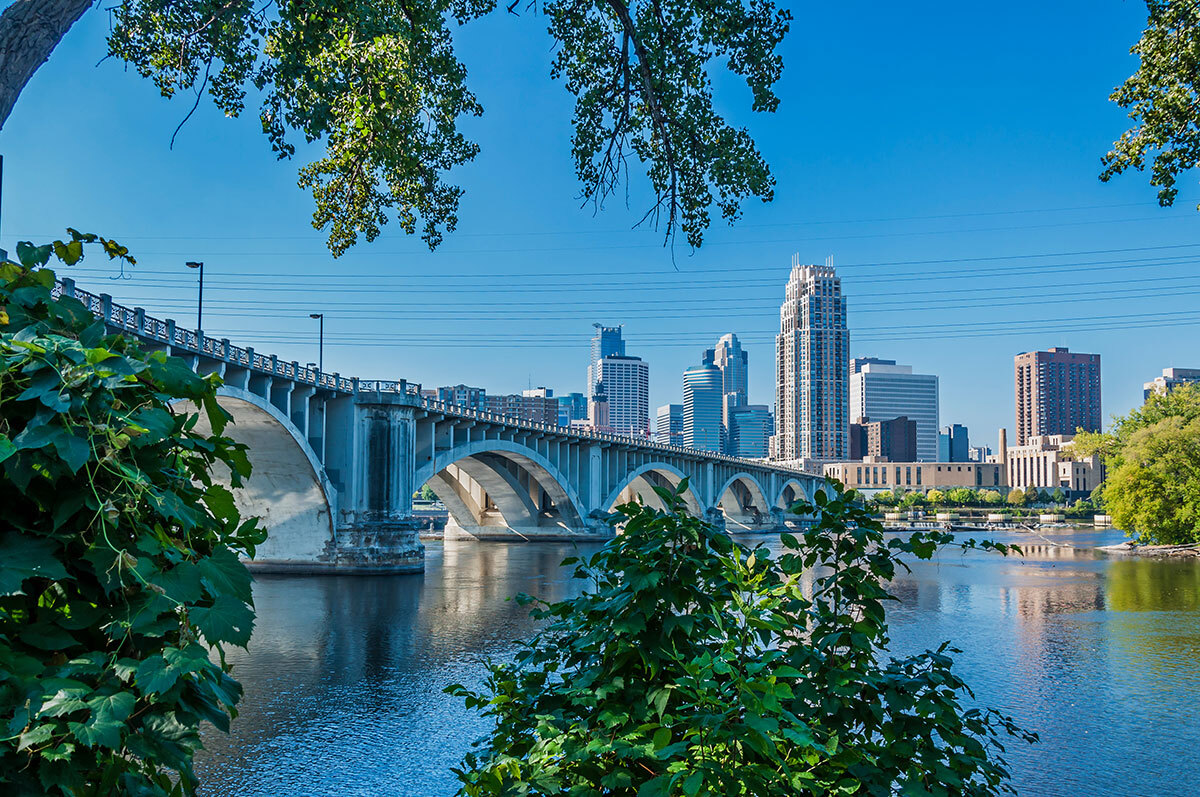
by DaoLe via iStock
Issue
Climate change threatens economic development, putting huge pressure on livelihoods in many communities
Solution
Implementation of a range of ecosystem-based adaptation measures improves resilience in communities while generating multiple societal benefits
Climate-sensitive economy in coastal areas
Ben Tre province is located in the Mekong River delta of Vietnam, which is about 86 km away from the commercial center of Ho Chi Minh city. It is the home of nearly 1.3 million people, as of 2020. Like other provinces in the Mekong delta, the agricultural, forestry, and fishery sectors remain key drivers of the province’s economy. Ben Tre is also famous for its white clams, a specialty of Vietnam. The cultivation and collection of clams play an important role in the livelihood of thousands of coastal residents. Other livelihood activities include non-rice crops such as watermelon, yam, peanuts, and sweet potatoes grown in the sand dunes, shrimp and crab farming under mangrove forests, intensive shrimp and clam farming on the river banks, and coastal fishing. Due to its location at the mouth of a coastal estuary, Ben Tre is highly susceptible to storms, storm surges, saltwater intrusion, and flooding.
Climate change scenarios for Ben Tre indicated that this province is vulnerable to the negative impacts of climate change such as irregular rainfall patterns, increased intensity, and lengthy rains in the rainy season, prolonged drought and heat, increased salinization, increased coastal erosion due to waves, storms and high tides, and increased frequency of storms. Therefore, reducing the existing vulnerabilities of Ben Tre’s communities is key to adapting to climate change and increasing resilience. The community-based conservation, management, and restoration of natural ecosystems are critically important in this adaptation process.
In Ben Tre, a number of affected areas and priorities have been identified, including loss of mangrove forests, mass mortality of bivalves, land erosion and saltwater intrusion, and lack of livelihood stability. Storm surges, strong waves, and heavy rains, especially during the southeast monsoon season, have accelerated the erosion of sandbars and agricultural lands. Rising sea levels and storm surges are transforming riparian ecosystems from brackish to saline and altering crop selection. In addition, saltwater intrusion, coupled with rising temperatures, is forcing farmers to overexploit groundwater to irrigate crops on the dunes. If appropriate measures are not taken, aquifer depletion is inevitable.

by saiko3p via FREEPIK
Ecosystem-based adaptation measures introduced
Various ecosystem-based measures have been introduced to mitigate the impacts of climate change and enhance the adaptive capacity of the local communities. The following measures have been implemented:
- Adjustment of current land use planning (i.e.reallocation/reduction of public works and coastal construction projects from areas of high climate change risk).
- Integrating climate change issues into state strategies and development plans (i.e. action programs to address climate change, biodiversity conservation plans, state socio-economic development plans, and communication programs).
- Maintaining dam and embankment systems to control erosion of beaches and rivers, effects of sea-level rise, and salinity intrusion.
- Wise use and management of freshwater resources (i.e.analysis of hydrological systems, mapping of surface water and groundwater, protection and restoration of wetlands to maintain and protect freshwater resources, collection, and storage of rainwater, coordination with upstream communities to ensure freshwater for downstream use and ecosystems).
- Conserving and restoring natural habitats (i.e.riparian vegetation, coastal management, and protection; plant more mangroves in coastal areas; restore natural hydrological regimes in rivers; establish fisheries management (restore aquatic resources)).
- Increasing investment in biodiversity conservation (i.e. management and strict protection of existing protected areas; propose and improve new protected areas; strengthen the capacity of protected areas; communication; raise awareness of local people).
- Climate-resilient cultivation (i.e. planting of windbreaks, absorption of water vapor salinity, prevention of tidal waves, rainwater harvesting, water-saving irrigation (drip irrigation), composting of organic waste, improved farming practices (pond preparation, seed, animal calendars, harvest management), coastal forest restoration, polyculture (shrimp-crab-fish-oyster), shrimp-rice/fish-rice rotation, research/taming of salt-tolerant rice varieties, drought, increased/improved connectivity with rivers to collect water and sediment).
- Strengthening early warning systems for natural disasters (i.e. establish a network of monitoring stations and coastal forecasting, utilize existing radio systems, send messages to cell phone subscribers).
Location




